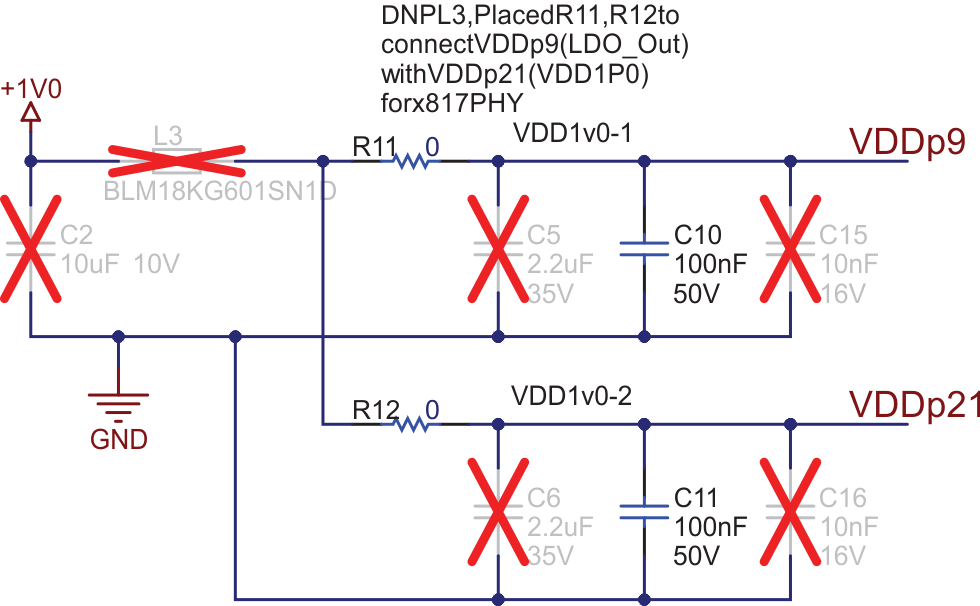TIDUF83 September 2024
3.1.1 Ethernet PHY Power Supply
The DP83TC817S-Q1 is capable of operating with a wide range of I/O supply voltages (3.3V, 2.5V, or 1.8V). This board features an IO supply voltage of 3.3V to interface with various baseboards capable of 3.3V I/O voltage. The DP83TC817S-Q1 also requires a 1.0V rail. Figure 3-1 shows the implemented schematic that allows use of the DP83TC817S-Q1 integrated LDO to generate the required 1.0V. No power supply sequencing is required. Check and follow the DP83TC817-Q1 Precise and Secure 100BASE-T1 Automotive Ethernet with TC10, IEEE802.1AS and IEEE802.1AE MACsec data sheet for the latest power supply device recommendations.
 Figure 3-1 Ethernet PHY 1.0V Rail
Schematic
Figure 3-1 Ethernet PHY 1.0V Rail
Schematic